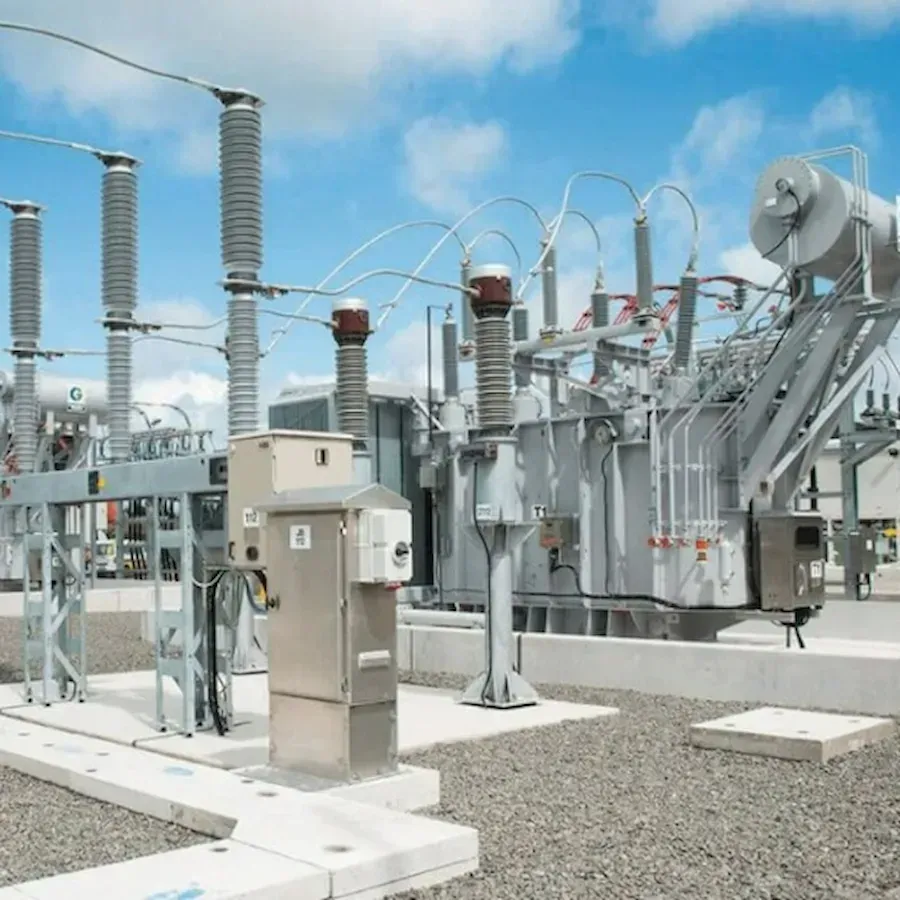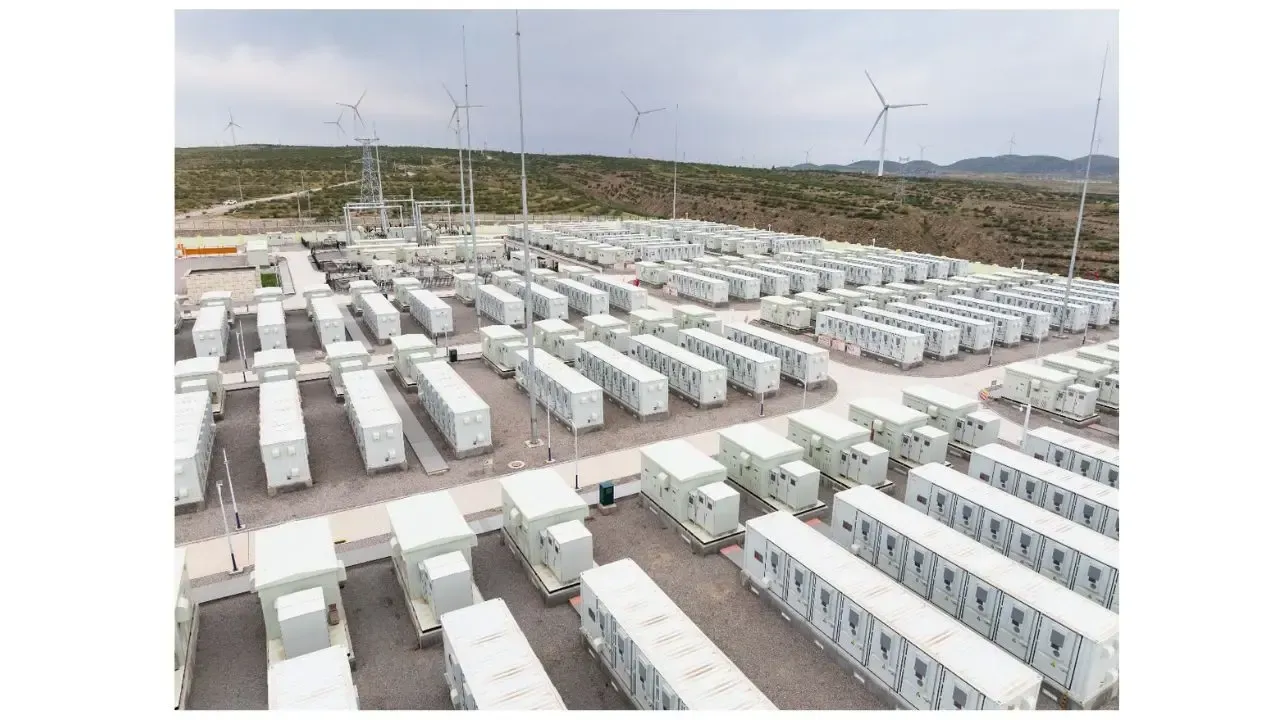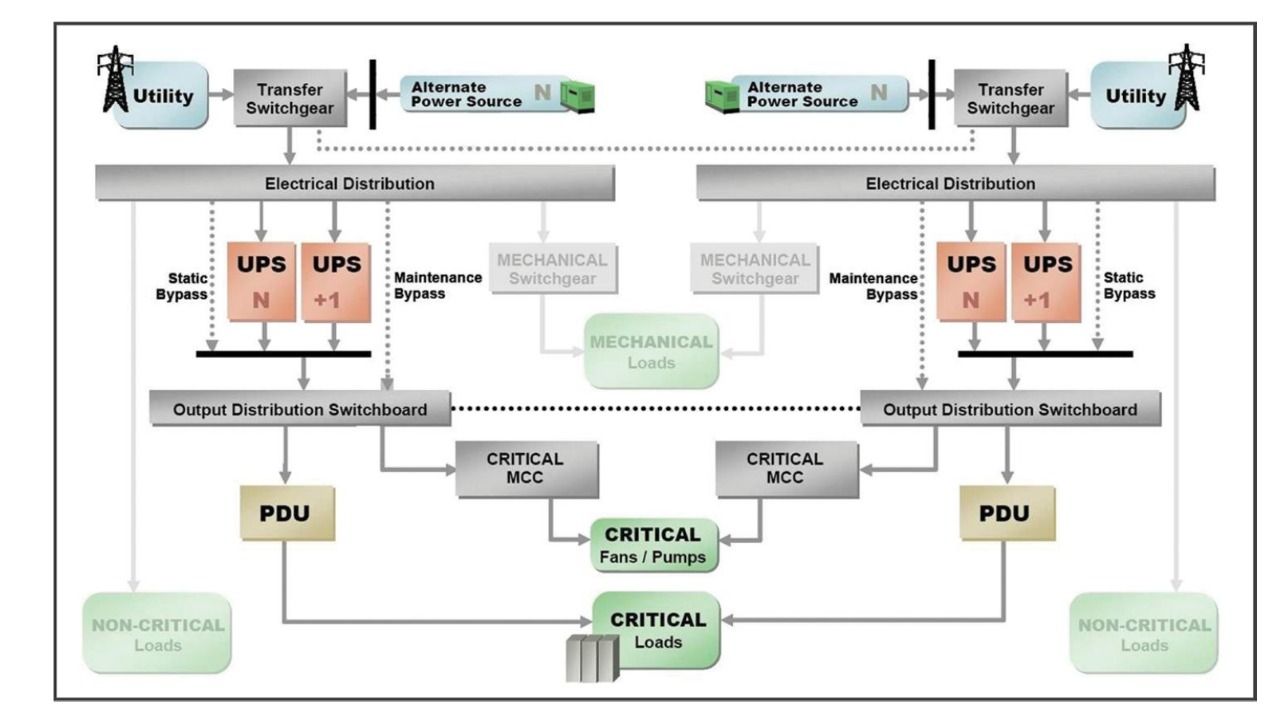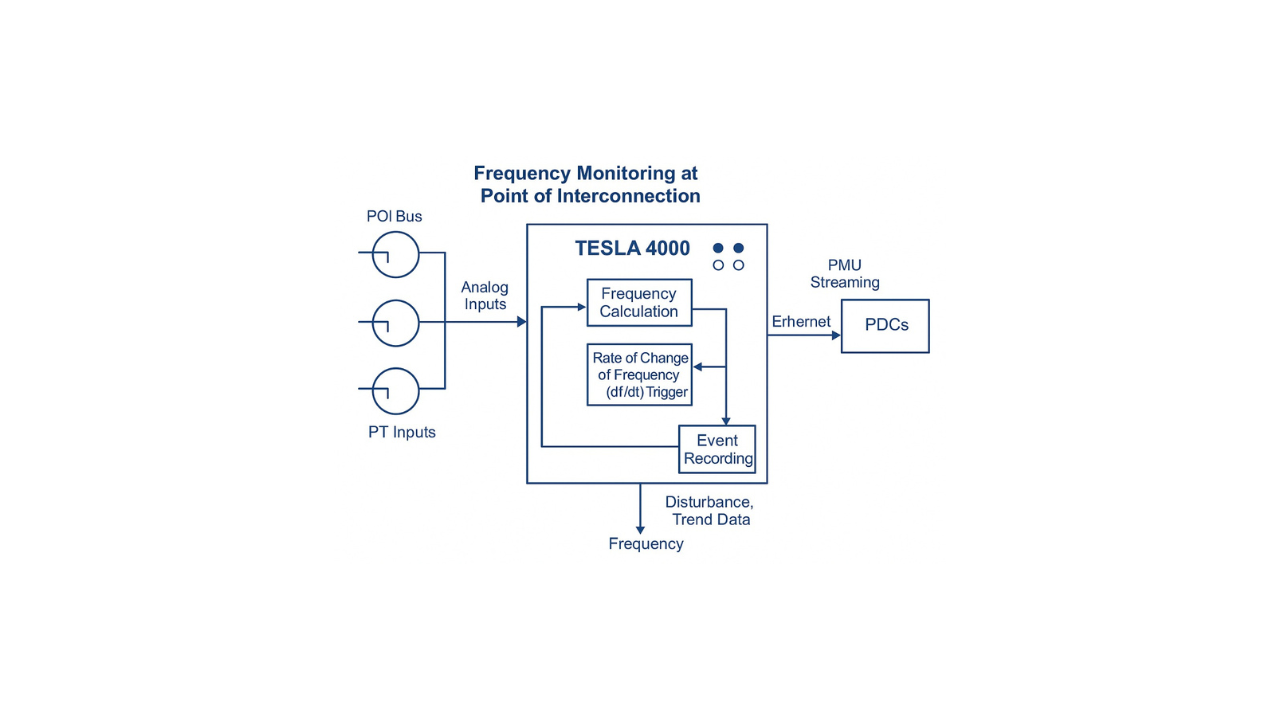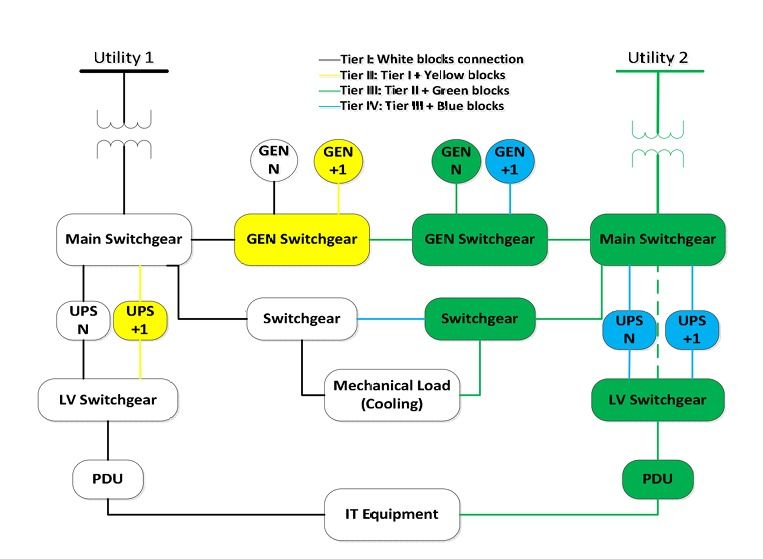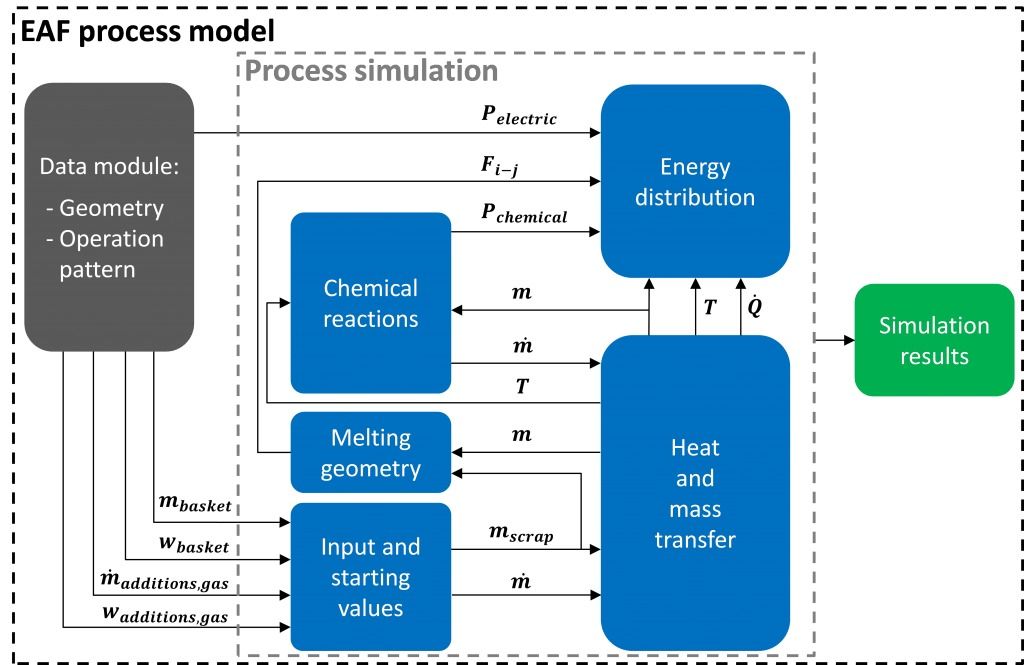A Coordinated Electric System Interconnection Review—the utility’s deep-dive on technical and cost impacts of your project.
Challenge: Frequent false tripping using conventional electromechanical relays
Solution: SEL-487E integration with multi-terminal differential protection and dynamic inrush restraint
Result: 90% reduction in false trips, saving over $250,000 in downtime
PJM MOD-032 Compliance and Data Reporting Excellence: A Technical White Paper by Keentel Engineering
October 31, 2025 | Blog
Executive Summary
The
PJM Planning Modeling Data Requirements and Reporting Procedures (MOD-032) document serves as the foundation for consistent, validated, and reliable modeling across the PJM Interconnection.
Compliance with MOD-032 ensures that Generator Owners (GOs) and Transmission Owners (TOs) submit standardized datasets for steady-state power flow, dynamic simulations, and short-circuit analysis all critical to maintaining bulk electric system reliability.
At Keentel Engineering, we specialize in translating regulatory requirements into technical reality. This white paper summarizes the MOD-032 process, identifies best practices, and presents three detailed case studies demonstrating compliance through engineering rigor.
1. Introduction
PJM Interconnection operates one of the largest and most complex electrical grids in North America, covering 13 states and over 65 million customers. The stability of this grid depends on accurate modeling of every generation, transmission, and reactive resource.
The MOD-032 standard, developed by NERC and implemented regionally by PJM, requires participating entities to provide detailed and validated modeling data for all facilities that impact the Bulk Electric System (BES).
PJM’s 2024 update to the MOD-032 procedures reinforces the importance of:
- Annual model submissions.
- Transparent data review cycles.
- Clear distinction between BES and non-BES elements.
- Integration of non-incumbent transmission developer data under FERC Order 1000.
2. The Purpose of PJM MOD-032
The MOD-032 standard ensures that steady-state, dynamic, and short-circuit models are built from consistent, verified data.
It serves three key purposes:
- Data Integrity – Standardized templates and quality checks ensure that model parameters accurately represent real equipment.
- Interconnection-Wide Consistency – Data from PJM, MMWG, and other regional coordinators feed into continent-wide planning cases.
- Regulatory Accountability – Entities that fail to meet data submittal or quality requirements face non-compliance penalties under NERC enforcement.
Keentel Engineering assists clients by preparing MOD-032-compliant data packages aligned with PJM’s submission formats and validation criteria.
Learn more about
NERC MOD-032 compliance support.
3. The PJM Process Overview
The PJM MOD-032 process includes the following steps:
- PJM Issues Data Requests: Submittal windows open (usually May 1 for GOs).
- GOs and TOs Submit Data: Using PJM’s Gen Model or Siemens Model on Demand (MoD).
- PJM Reviews Submissions: Performs quality checks using MMWG-defined error criteria.
- Transmission Owners Review Models: Verify topology and data correctness.
- Final Models Submitted to NERC Designee: Integrated into interconnection-wide planning cases.
This iterative process reinforces accountability and ensures every data owner participates in maintaining model quality.
4. PJM Deliverables
4.1 Load Flow Cases
Each year, PJM produces load flow models for:
- Year +1, +2, +5, and +10.
- Scenarios: Spring Light Load, Minimum Load, Summer Peak, Winter Peak, and Shoulder Peak.
These models incorporate:
- Generation dispatch assumptions.
- Planned outages.
- Seasonal ratings.
- Transmission project in-service dates.
4.2 Dynamic Models
Dynamic cases build upon load flow topology and require:
- Generator, exciter, governor, and PSS models.
- Reactive device modeling (FACTS, SVC, STATCOM).
- Model acceptance aligned with NERC’s “Acceptable Models List.”
4.3 Short-Circuit Models
Short-circuit models, developed in ASPEN OneLiner, analyze breaker duties and fault current contributions.
Transmission Owners provide equipment-level data for buses, transformers, and breakers.
5. Data Submission and Validation
5.1 Submission Platforms
Under the PJM MOD-032 data submission process, each entity type follows a defined annual schedule and uses specific tools and file formats to ensure consistency and compliance.
Generator Owners (GOs) submit their modeling data through PJM’s Gen Model platform during the May–June submission window, providing datasets in .dyr and .raw formats for steady-state and dynamic simulations.
Transmission Owners (TOs) use Siemens Model on Demand (MoD) on an annual cycle from February to October, preparing and uploading .prj, .raw, and .csv files containing transmission network parameters, transformer data, and system topology. For short-circuit modeling, entities deliver their datasets via ASPEN OneLiner or email, typically between August and April, using .olr and .chf files.
This structured submission framework ensures that PJM receives accurate, standardized, and validated modeling data essential forreliable grid planning and NERC compliance.
5.2 Validation and Error Checking
PJM uses MMWG data checks to ensure compliance. All final models must be free of errors or justified via documented exceptions.
Validation focuses on:
- Electrical continuity and data completeness.
- Correct area, zone, and ownership fields.
- Proper dynamic initialization.
6. Data Ownership and Compliance Roles
Generator Owners (GOs)
Must submit or update:
- Generation characteristics.
- As-built submittals post-interconnection.
- Dynamic model data (.dyr).
Transmission Owners (TOs)
Must submit:
- Transmission line, transformer, and load data.
- Reactive and HVDC components.
- Short-circuit ratings and breaker data.
Both entities are responsible for ensuring consistency with NERC definitions of the Bulk Electric System (BES).
7. BES and Non-BES Demarcation
PJM provides detailed diagrams (pages 28–34) demonstrating scenarios where BES and non-BES modeling responsibilities are divided between incumbent and non-incumbent TOs.
For example:
- Entity #2 may own 69 kV radial lines (non-BES) connected to Entity #1’s 138 kV BES system.
- In this case, Entity #1 maintains modeling jurisdiction.
- However, if Entity #2 owns a networked 69 kV loop feeding back into the BES, it becomes partially BES-eligible.
Understanding these distinctions ensures accurate submission boundaries and prevents modeling gaps or overlaps.
8. The Importance of MOD-026 and MOD-027 Alignmen
While MOD-032 defines the data submission process, MOD-026 and MOD-027 ensure dynamic model validation.
Keentel Engineering provides clients with comprehensive support through:
- Model parameter validation (field test correlation).
- Simulation benchmarking (PSS®E and PSCAD studies).
- PJM acceptance documentation preparation.
Together, these standards form the triad of data quality, model validation, and operational reliability.
9. Challenges in MOD-032 Implementation
9.1 Data Quality Variability
Many entities still rely on legacy models or incomplete parameters. Keentel’s engineers specialize in harmonizing these data sets with modern modeling expectations.
9.2 Coordination Between GOs and TOs
Shared tie-line and bus data must be consistent between interconnected entities. Misalignment can cause model conflicts and study errors.
9.3 Software and File Compatibility
Ensuring PSS®E, ASPEN, and MoD formats align requires strict version control and technical review before upload.
10. Keentel Engineering’s MOD-032 Compliance Support Framework
10.1 Our Process
- Data Collection: Compile PSS®E load flow, dynamics, and ASPEN files.
- Data Validation: Cross-check against PJM’s MMWG requirements.
- Model Conversion: Reformat or rebase data to ensure compliance with Gen Model or MoD.
- Submission Support: Guide client through PJM submittal window.
- Response Management: Address PJM feedback and update documentation.
10.2 Our Tools
- Siemens PSS®E and MoD
- ASPEN OneLiner
- PSCAD/EMTDC
- DigSILENT PowerFactory
- MATLAB/Simulink for validation
10.3 Deliverables
- MOD-032-compliant dataset package.
- Detailed engineering report (PJM audit-ready).
- Annual compliance calendar tracking.
Book a
power system study
11. Technical Case Studies
Case Study 1: MOD-032 and MOD-026 Integration for a Renewable Generator
Client: Confidential Independent Generator (Renewable Energy Facility)
Scope: MOD-032 steady-state, dynamics, and short-circuit data integration with MOD-026 validation
Region: PJM Interconnection
Challenge:
The client’s inverter-based generation facility required NERC-compliant model submissions, but the OEM’s provided .dyr models lacked verified governor and stabilizer representations. Several inverter control parameters were proprietary, preventing use of the default NERC-listed model.
Keentel Engineering Approach:
- Created a generic equivalent model set (REGCA1 + REECA1 + REPCA1) to represent the inverter plant.
- Verified model performance using PSCAD/EMTDC and PSS®E side-by-side simulations.
- Aligned voltage control and reactive droop parameters with PJM’s steady-state assumptions.
- Submitted validated dynamic data via PJM’s Gen Model platform within the annual window.
Outcome:
- PJM approved the model on first submission.
- MOD-026 dynamic test results matched simulated response within ±5 %.
- Full compliance achieved with no data resubmittal required.
Key Lesson:
For inverter-based resources, using generic equivalents consistent with NERC’s acceptable model list streamlines MOD-032 approval and cross-validation under MOD-026.
Case Study 2: Transmission Owner Data Modernization and Model Alignment
Client: Confidential Transmission Utility
Scope: Annual MOD-032 power flow and short-circuit model update
Tools: Siemens Model on Demand (MoD) and ASPEN OneLiner
Challenge:
The client’s existing substation data contained outdated impedance and breaker rating information spread across multiple file formats, causing discrepancies between internal planning and PJM’s MoD cases.
Keentel Engineering Approach:
- Consolidated legacy records from EMS, GIS, and ASPEN databases into a unified dataset.
- Performed cross-validation of bus numbering per MMWG conventions.
- Rebuilt transmission line and transformer parameters into a verified .raw file for MoD.
- Conducted fault-current reconciliation between ASPEN and PSS®E to ensure consistency.
Outcome:
- PJM accepted the updated case during the second trial review.
- Fault-current mismatch reduced from ±8 % to below 1 %.
- Automated breaker-rating matrix developed for future compliance cycles.
Key Lesson:
Aligning data sources and enforcing cross-platform validation greatly reduces PJM feedback cycles and ensures clean, audit-ready submissions.
Case Study 3: FERC Order 1000 Project Compliance for a Non-Incumbent Developer
Client: Confidential Transmission Developer (Non-Incumbent TO)
Project: Network Upgrade – 230 kV Line and Substation
Objective: Achieve full MOD-032 compliance prior to energization
Challenge:
As a non-incumbent Transmission Owner, the developer could not execute the PJM Consolidated Transmission Owners Agreement until 45 days before energization but needed to deliver compliant models well in advance.
Keentel Engineering Approach:
- Developed interim .idv topology files reflecting planned configuration.
- Coordinated with PJM to align Owner and Area numbers under Appendix 3 demarcation guidance.
- Submitted preliminary models directly to PJM Transmission Planning for review.
- Transitioned all files to Model on Demand upon NERC registration.
Outcome:
- Seamless model acceptance during PJM’s final trial.
- No re-submittal requests or energization delays.
- Compliance procedure adopted by the developer as a template for future competitive projects.
Key Lesson:
Early model coordination and consistent owner-area mapping enable non-incumbent developers to meet MOD-032 obligations even before final registration.
12. Keentel’s Best Practices for MOD-032 Success
- Early Data Preparation: Start compiling model data before the official submission window opens.
- Version Control: Maintain consistent software versions (PSS®E, ASPEN, MoD).
- Cross-Team Coordination: Align GO and TO data to avoid mismatched bus or tie-line entries.
- Validation Automation: Use scripts to pre-check errors flagged by MMWG rules.
- Documentation Discipline: Archive all model revisions with submission logs for audit readiness.
- Annual Review: Reconcile prior-year data against new PJM templates and updates.
13. The Future of Modeling and Compliance
The 2024 PJM MOD-032 update introduces a more digital, data-driven future:
- Integration of cloud-based model submissions through PJM’s MoD.
- Expansion of inverter-based resource (IBR) modeling requirements.
- Enhanced cross-validation between MOD-032 and MOD-033 validation data.
- Real-time model validation initiatives using PMU data and event playback.
Keentel Engineering remains at the forefront of this transition, helping clients automate compliance workflows and maintain NERC-ready datasets.
14. Conclusion
The PJM MOD-032 process is more than a regulatory requirement—it is a shared engineering responsibility to preserve grid reliability.
By ensuring accurate, consistent, and validated modeling data, Generator Owners and Transmission Owners play a direct role in preventing system instability and ensuring efficient grid operations.
Keentel Engineering’s structured approach—grounded in deep technical expertise and full-cycle compliance support—empowers clients to stay compliant, minimize risks, and optimize their system models for real-world performance.
Frequently Asked Questions
1. What is PJM’s role under MOD-032?
PJM acts as both Transmission Planner (TP) and Planning Coordinator (PC), defining data requirements and collecting submissions from Generator and Transmission Owners.
2. Who must submit data under MOD-032?
All Generator Owners (≥20 MW) and Transmission Owners within the PJM footprint, as well as non-incumbent developers with approved projects under FERC Order 1000.
3. What are the primary modeling categories?
- Steady-State (Power Flow)
- Dynamics (Transient Stability)
- Short-Circuit (Fault Studies)
4. How frequently must data be updated?
At least once every 13 months or immediately following major system changes.
5. What are PJM’s accepted data formats?
.raw, .dyr, .csv, .prj, .olr, .chf, and .idv (depending on modeling type).
6. How does MOD-032 differ from MOD-026 and MOD-027?
MOD-032 governs data collection, while MOD-026 and 027 ensure model validation and accuracy through performance testing.
7. What is Model on Demand (MoD)?
A Siemens PTI platform used by PJM for collecting and managing transmission modeling data, including topology, ratings, and profiles.
8. What is Gen Model?
PJM’s centralized web-based portal for Generator Owners to submit MOD-032 data.
9. What happens if an entity fails to submit data?
PJM triggers a 90-day non-compliance correction window. Continued inaction may result in NERC enforcement.
10. Can Keentel Engineering prepare my MOD-032 package?
Yes. Keentel offers full-cycle support—from model preparation and validation to PJM upload assistance.
11. How are tie-line data conflicts resolved?
By cross-coordination between TOs. PJM maintains an annual tie-line database accessible via SharePoint for verification.
12. What constitutes an “acceptable” dynamics model?
Models appearing on NERC’s Acceptable Models List or generic equivalents verified against field data.
13. What are “trial cases” in the PJM build cycle?
Intermediate case builds (Trial 1–3) used for review and refinement prior to final interconnection submission.
14. How are non-incumbent TOs managed in MoD?
They submit .idv files until officially registered under NERC and the PJM CTOA, after which they gain full MoD access.
15. What data checks does PJM perform?
PJM uses MMWG Power Flow Data Checks to validate continuity, impedance accuracy, and voltage consistency.
16. How does PJM handle dynamic load modeling?
TOs must model aggregate load dynamics, including induction motors, per TPL-001-4 R2.4.1.
17. What is the difference between “Owner” and “Area” in MoD?
“Area” identifies a regional modeling boundary, while “Owner” specifies asset ownership for data submittal and compliance.
18. What is a “baseline project” in this context?
A PJM Board-approved transmission expansion or reinforcement project included in RTEP planning.
19. How are reactive devices modeled?
Reactive components such as shunts, capacitors, and SVCs are modeled with voltage limits, step sizes, and operation modes.
20. How does Keentel ensure model accuracy?
By applying cross-platform verification—checking ASPEN fault results against PSS®E and field data, ensuring full alignment before PJM submission.

About the Author:
Sonny Patel P.E. EC
IEEE Senior Member
In 1995, Sandip (Sonny) R. Patel earned his Electrical Engineering degree from the University of Illinois, specializing in Electrical Engineering . But degrees don’t build legacies—action does. For three decades, he’s been shaping the future of engineering, not just as a licensed Professional Engineer across multiple states (Florida, California, New York, West Virginia, and Minnesota), but as a doer. A builder. A leader. Not just an engineer. A Licensed Electrical Contractor in Florida with an Unlimited EC license. Not just an executive. The founder and CEO of KEENTEL LLC—where expertise meets execution. Three decades. Multiple states. Endless impact.
Services

Let's Discuss Your Project
Let's book a call to discuss your electrical engineering project that we can help you with.

About the Author:
Sonny Patel P.E. EC
IEEE Senior Member
In 1995, Sandip (Sonny) R. Patel earned his Electrical Engineering degree from the University of Illinois, specializing in Electrical Engineering . But degrees don’t build legacies—action does. For three decades, he’s been shaping the future of engineering, not just as a licensed Professional Engineer across multiple states (Florida, California, New York, West Virginia, and Minnesota), but as a doer. A builder. A leader. Not just an engineer. A Licensed Electrical Contractor in Florida with an Unlimited EC license. Not just an executive. The founder and CEO of KEENTEL LLC—where expertise meets execution. Three decades. Multiple states. Endless impact.
Leave a Comment
We will get back to you as soon as possible.
Please try again later.
Related Posts



